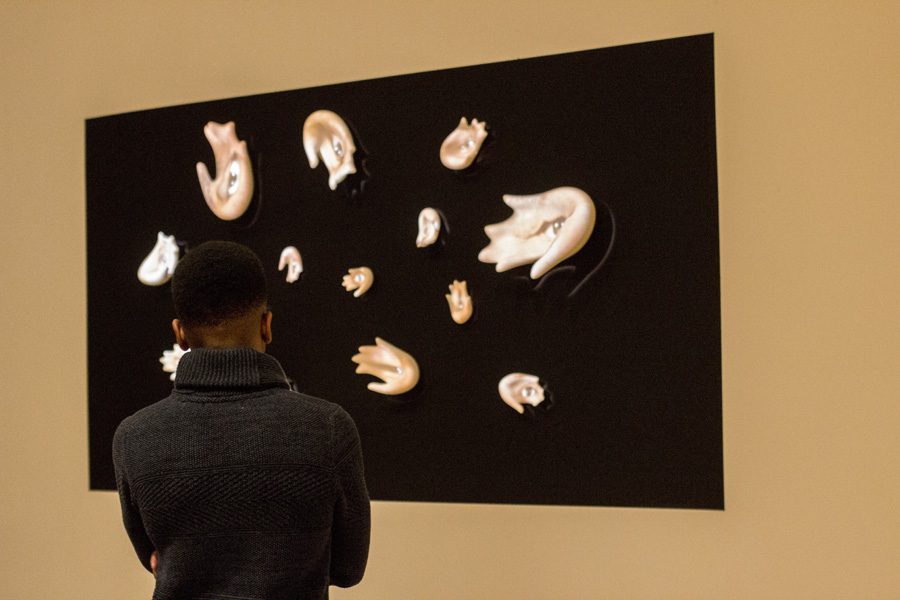“Uneasy Syzygies”: an art exhibition
Dave Ryan, the chair of Hamline’s Digital Media Arts department, has work displayed at Mia.
David Peterson (’17) examines the Vigilants located in Mia on Thursday, April 21. The new exhibit, “Uneasy Syzygies” will be open until July 3. Admission to Mia is free.
April 27, 2016
SleepCycle. Vigilants. Epidemagogue.
The titles strike the reader and communicate the first indication of the atmosphere of “Uneasy Syzygies.” This art exhibit at Mia (Minneapolis Institute of Art) opened last Thursday, April 21. Observers wandered the exhibition room stopping at each of three pieces, but quickly realized there was more to do than simply look at the art.
On one wall, projections of eyes rest inside ceramic hands, their pupils moving with passersby. Soft, fluorescently-colored light streams over a field of ceramic bones in another area of the dimly lit room. A bench sits in front a series of ceramic pillows as dream-like images flash across them. Each piece represents a novel endeavour in the realm of mixed media— “the interaction of figures in opposition,” said Dave Ryan, assistant professor and chair of Digital Media Arts at Hamline.
Ryan and ceramic artist Mika Negishi Laidlaw created “Uneasy Syzygies” through the very syzygy of their own talents and expertise. From the idea of combining ceramic sculptures with interactive digital video media emerged an exhibition that introduced pairs of connected but opposing forces.
SleepCycle is a piece based on research that correlates sleep quality and the health of the aging mind. If there is no motion in the surrounding space, the ceramic pillows will show a display of collective dreaming—the image of white clouds and smoke will drift slowly across the deceivingly soft-appearing sculptures.
“The piece rewards people for sitting and watching,” said Ryan.
On the opposite side of the room, the Vigilants exhibit carefully watches the area. According to the plaque accompanying the piece, each eye is complete with its own reaction time, attention space, and need to sleep. When all is motionless in the gallery, all the Vigilants will close their eyes and drift into sleep. The piece was inspired by the ancient charms that ward off the “evil eye.”
To interact with the Epidemagogue exhibit, one would gently touch the bones at the edge of the pedestal and watch as the colors began to change. Change then spreads to surrounding bones. Therefore, users transmit imagery to rest of the network, creating a conflict if more than one player attempts to gain control.
Each piece in this particular series is different, conveyed a different mood and stemmed from differing background ideas. However, all three shared the common characteristics of interacting with the viewer. To do so, technology such as motion detectors, projection and/or touch sensors were utilized by all the works.
From now until July 3 this exhibit will be open for public viewing—visits to Mia are also free to everyone. On Thursday, May 19, a gallery conversation will take place, allowing Ryan and Laidlaw to answer questions and elaborate on the ideas behind their work. The entirety of the collaboration would not have been possible without the efforts of both artists to explore new possibilities and experiment the mixing of differing medias.





